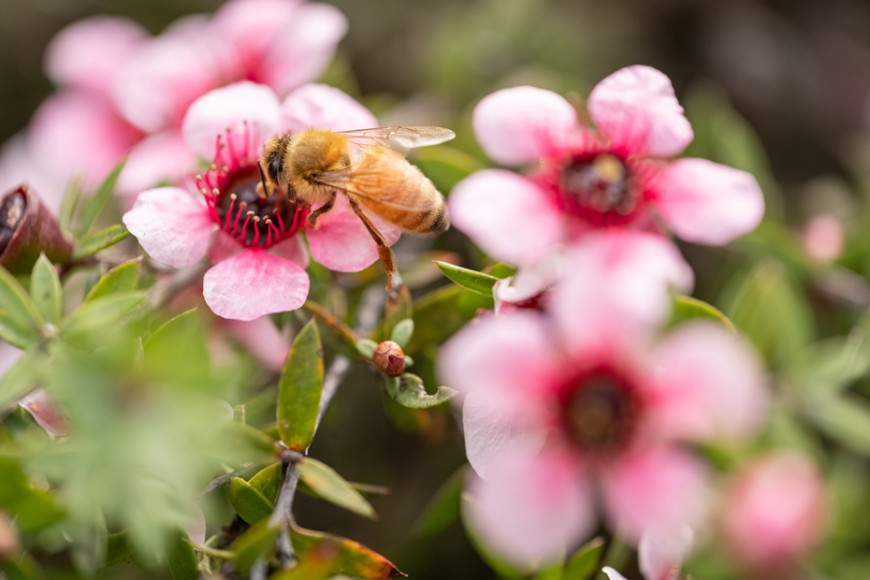
Bee on mānuka
A large proportion of New Zealand’s natural mānuka populations grow on Māori-owned land. The ‘Honey Landscape’ project is helping to create a sustainable native mānuka honey industry that reduces hive losses and helps landowners to increase honey production while protecting the honey bees, native mānuka and plant species.
Dr Gary Houliston is leading the Manaaki Whenua component of The Honey Landscape project, building a comprehensive model and map of New Zealand’s native honey landscape that blends science and tikanga Māori. The model will show in real time the nectar and pollen being produced in native forests and scrubland all over New Zealand.
As part of this work, researchers have been working with Māori landowners to collect leaf samples from natural mānuka stands, extract the DNA, and analyse the data. ‘By the end of the programme, we want a tool that a landowner can use to assess their property for how many hives they can actually place in an area: they would take our tool, consider what is on the land, look at what sort of vegetation they have, and assess how many hives they’ve got or can actually run on the land without overpopulating the bees,’ says Dr Houliston.
